I’ve lost count of how many times I’ve watched this gem, but every single viewing feels like a treasure hunt—always spotting some hidden detail I missed before! Maybe it’s just life giving me new lenses to see through (or let’s blame it on age?). It's packed with edge-of-your-seat tension and a few “better-grab-a-pillow-to-squeeze” moments. If you’re a die-hard Bogart fan or just love a good, moody noir, this masterpiece is a must-watch. Trust me, it’s a ride worth taking!
Key Largo (1948) isn’t just a film—it’s high-voltage thrills wrapped in a stormy noir package! Directed by the one-and-only John Huston and based on Maxwell Anderson’s gripping play, this cinematic gem is like a rollercoaster through tension and drama, with a cast that’s pure gold: Humphrey Bogart, Lauren Bacall, Edward G. Robinson, and Lionel Barrymore. Picture this—a hurricane whipping through the stunning Florida Keys while inside, the tempers flare and danger simmers. It’s a cocktail of survival, bravery, and nail-biting moral dilemmas that keeps your heart pounding and your eyes glued to the screen. Prepare for this major storm of a film that will totally blow you away! (pun here is absolutely intended)
The story unfurls as Frank McCloud (Humphrey Bogart), a battle-worn war veteran with a suitcase full of regrets, arrives in the sultry, storm-threatened paradise of Key Largo. What starts as a quiet visit to pay respects to the family of a fallen comrade quickly spirals into chaos. The serene hotel, seemingly plucked from a postcard, is anything but peaceful—it’s now the stage for a high-stakes showdown. Enter Johnny Rocco (Edward G. Robinson), a swaggering gangster oozing menace and charm, backed by a crew of shady characters who turn the place into a powder keg of danger and suspense.
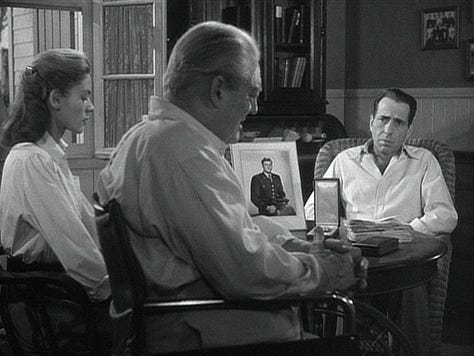
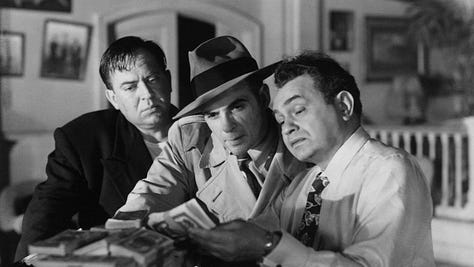
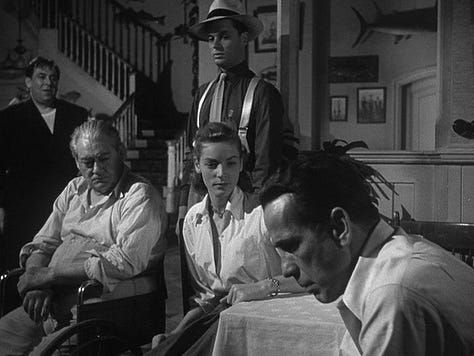
As the hurricane howls and thrashes outside with wild fury, its untamed chaos feels like a warm-up act for the storm brewing within the hotel walls. Rocco, the swaggering kingpin with a flair for menace, locks horns with Frank, the reluctant hero who’s been dodging heroism like it’s an unpaid bill. Meanwhile, Nora Temple (Lauren Bacall), the sharp and steadfast widow, becomes the secret ingredient to Frank’s simmering resolve—like a spark to dry kindling. Together, this dynamic duo plunges into a pulse-pounding game of survival, where bravery and a dash of cunning are the only cards worth playing. Then there is James Temple (Lionel Barrymore), a man confined to his wheelchair yet wielding words like weapons against the menacing Johnny Rocco. His sharp intellect and unwavering courage form a quiet but potent resistance, relying on Frank and Nora to turn the tide in this charged standoff. Forget the hurricane; the real tempest is the showdown between human grit and looming danger.
Key Largo dives headfirst into a whirlwind of moral dilemmas, and redemption, and the lingering shadows of war, spinning a tale as gripping as a hurricane’s eye. Frank McCloud’s journey isn’t just about making it out alive—it’s a collision course with his own demons and the reluctant mantle of heroism. The film sweeps viewers into an emotional rollercoaster, where fear and danger bring out raw, unfiltered humanity. Packed with moments that will have you biting your nails one second and marveling at unexpected acts of bravery the next, it’s a storm of survival, courage, and the sparks that fly when resilience meets reckoning.
The performances in Key Largo are a feast for the senses! Humphrey Bogart doesn’t just act—he pulls you into the soul of a man wrestling with ghosts of his past, serving up moments that make you cheer, ponder, and maybe even shed a tear. Lauren Bacall? She’s a powerhouse of subtle brilliance, her every glance and word radiating hope like a lighthouse in the fiercest storm. Then there’s Edward G. Robinson, stealing the show as Johnny Rocco, the kind of villain you love to hate—oozing charm and danger in equal measure. This trio makes the screen sizzle, turning drama into an unforgettable cinematic dance.
The film’s cinematography grabs you by the collar and drags you straight into the eye of the storm, making every howling gust of wind and creak of the hotel walls feel like a character in its own right. John Huston doesn’t just direct—he orchestrates a symphony of tension, blending the furious chaos of nature with the fragile bravery of human spirit, creating a noir adventure so gripping, you’ll find yourself holding your breath until the credits roll.
This isn’t just any classic film—it’s suspense and the smoky allure of noir! Packed with jaw-dropping twists and gritty drama, it’s the kind of movie that keeps popcorn flying and pulses racing. Oh, and let’s talk about Bogart and Bacall—they’re absolute magic together, lighting up the screen with chemistry so sizzling, it could outshine the Florida sun!
Key Largo sparkles as a noir gem, pulling viewers into its whirlwind of drama, danger, and dazzling character dynamics. It’s the kind of cinematic thrill ride that grabs hold of your senses and doesn’t let go, leaving you breathless and hungry for more of its stormy brilliance.
Directed by: John Huston
Cast:
Humphrey Bogart as Maj. Frank "Soldier" McCloud
Edward G. Robinson as Johnny Rocco/Howard Brown
Lauren Bacall as Nora Temple
Lionel Barrymore as James Temple
Claire Trevor as Gaye Dawn
Thomas Gomez as Richard "Curly" Hoff
Harry Lewis as Edward "Toots" Bass
John Rodney as Deputy Sheriff Clyde Sawyer
Marc Lawrence as Ziggy
Dan Seymour as Angel Garcia
Monte Blue as Sheriff Ben Wade
William Haade as Ralph Feeney
In addition, Jay Silverheels and Rodd Redwing appear in uncredited roles as John and Tom Osceola, respectively.
Release Date: July 31, 1948
Premiere Information: opened in New York on July 16, 1948
Production Company: Warner Bros. Pictures, Inc.
Screenplay Information: Based on the play Key Largo by Maxwell Anderson, as produced by The Playwrights Company (New York, 27 Nov 1939).
Notes of Interest (courtesy TCM):
The film begins with the following foreword: "At the southernmost point of the United States are the Florida Keys, a string of small islands held together by a concrete causeway. Largest of these remote coral islands is Key Largo." According to a November 6, 1947, Hollywood Reporter news item, some scenes were filmed on location in Key West, FL, although Huston stated in a modern interview that it was shot mostly in the studio.
A January 13, 1948, Hollywood Reporter news item reported that director of photography Karl Freund shot a three-minute continuous sequence using two dollies and a new light-weight camera. The shot begins when Humphrey Bogart and Thomas Gomez are in a bathroom and moves through a room into the hallway, down two flights of stairs, through another hallway and onto a porch.
A modern source notes that Huston drew on his 1944 war documentary San Pietro when writing the scenes in which "Frank" tells "Nora" and "Temple" about his dead friend.
This was Huston's last film for Warner Bros., and the last film that Bogart and Bacall made together.
Claire Trevor won the Academy Award for Best Supporting Actress.
Edward G. Robinson and Claire Trevor reprised their roles for a Lux Radio Theatre broadcast on November 28, 1949.
Enjoy!
…Jill
The Forks Part…
As I rummaged through my mom's old recipe box, I felt like a culinary archaeologist uncovering a gold mine of flavor-filled nostalgia! There it was—a family recipe from my great-grandmother, tucked into my grandmother's notebook like a secret heirloom. What better way to honor this delicious discovery than to whip it up and pair it with a cozy screening of Key Largo (1948)! Imagine the scene: timeless dishes from the past mingling with classic Bogart and Bacall—a night bursting with vintage vibes, tasty treasures, and cinematic magic!

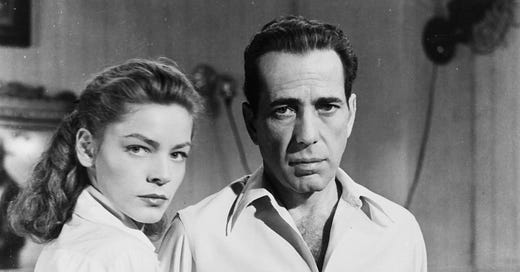



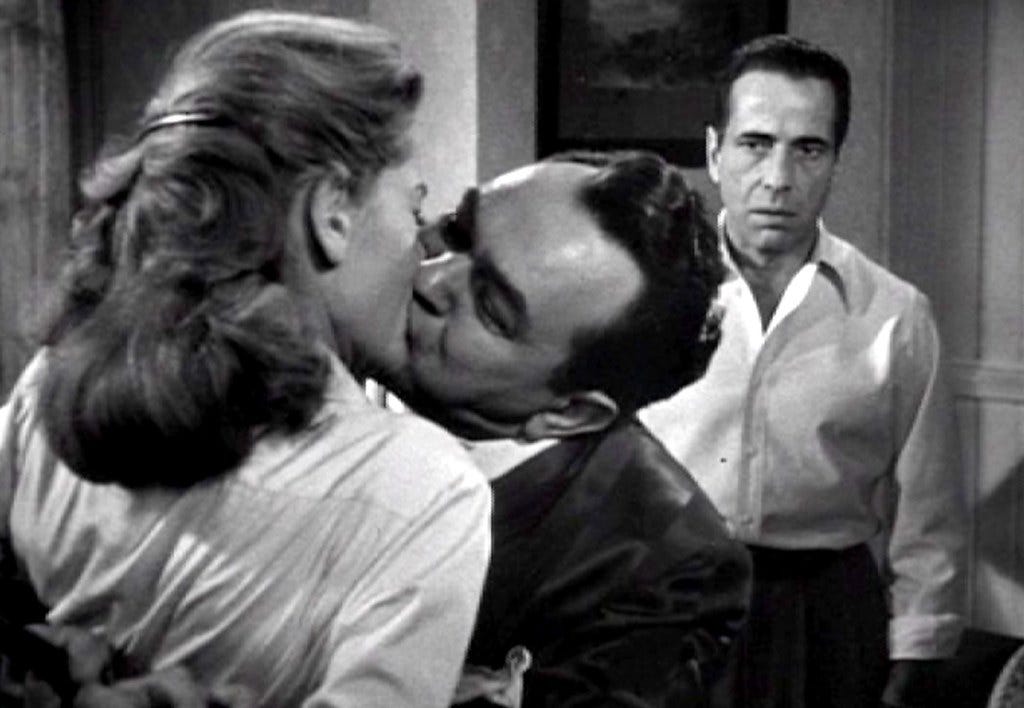
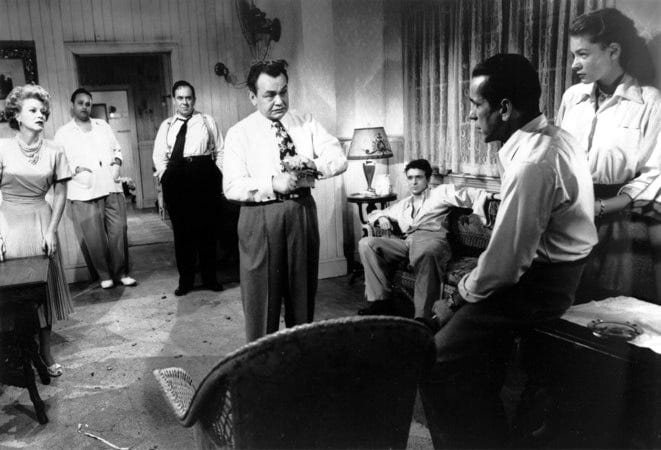
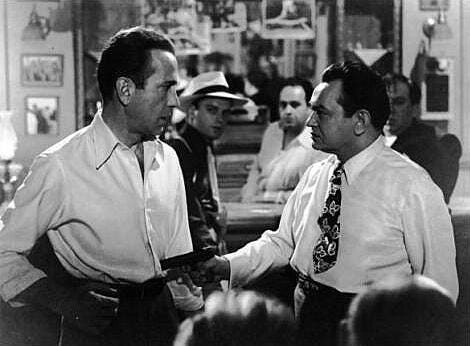
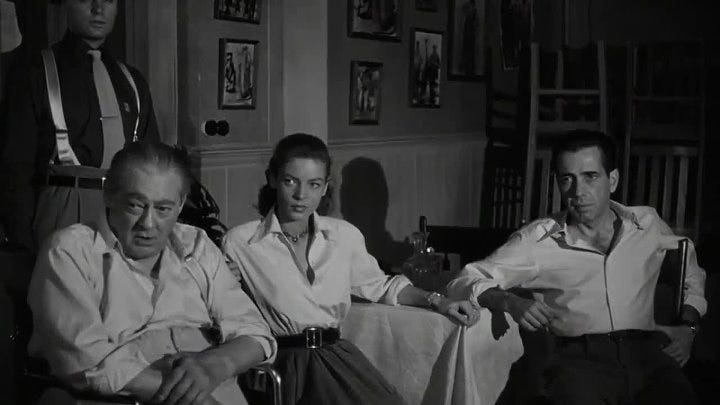
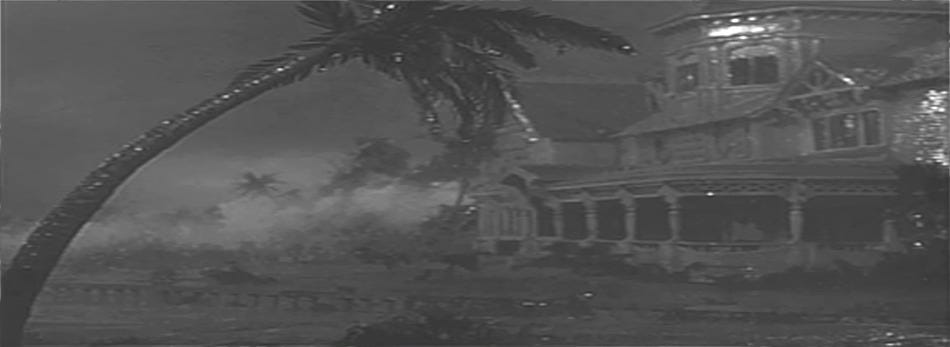
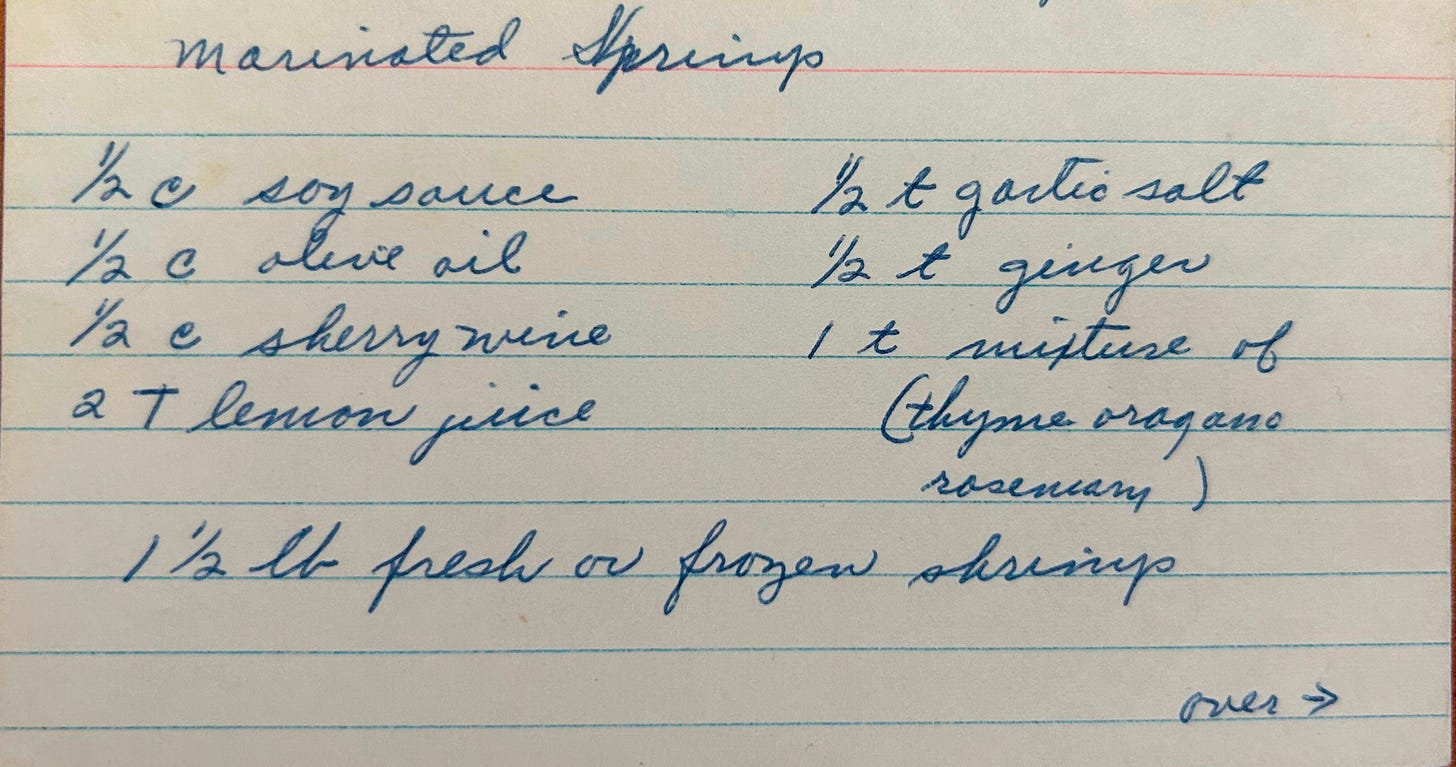
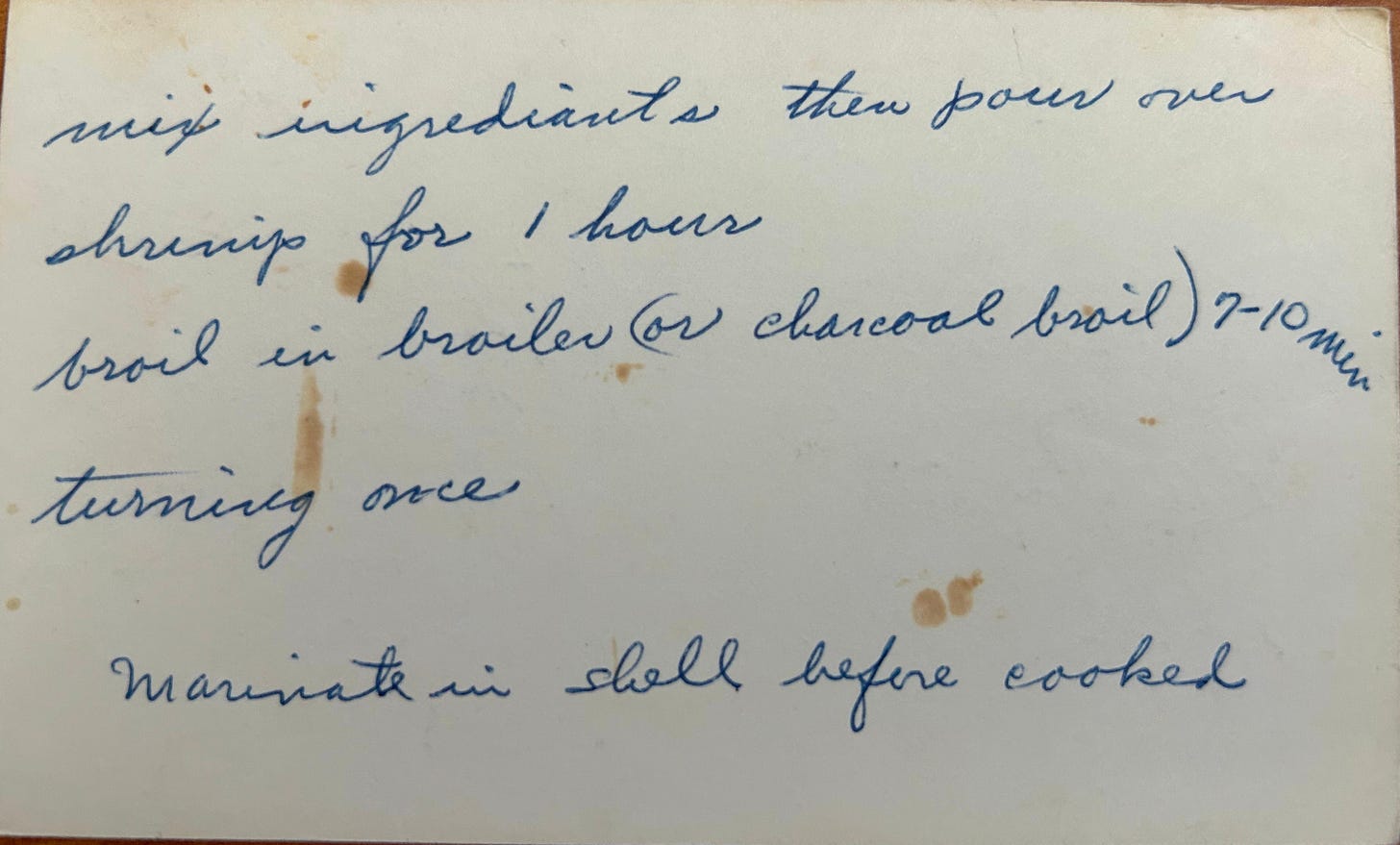
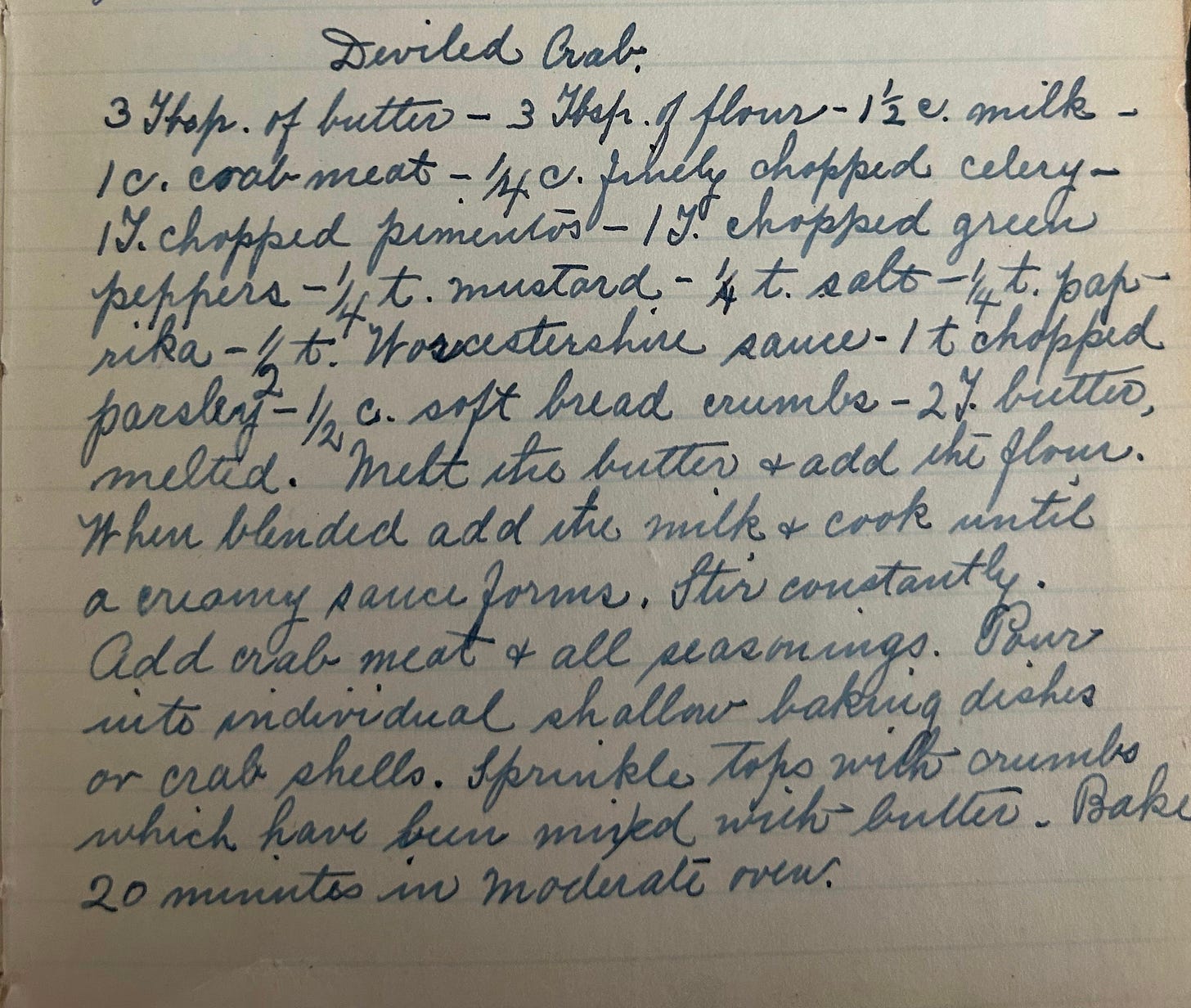
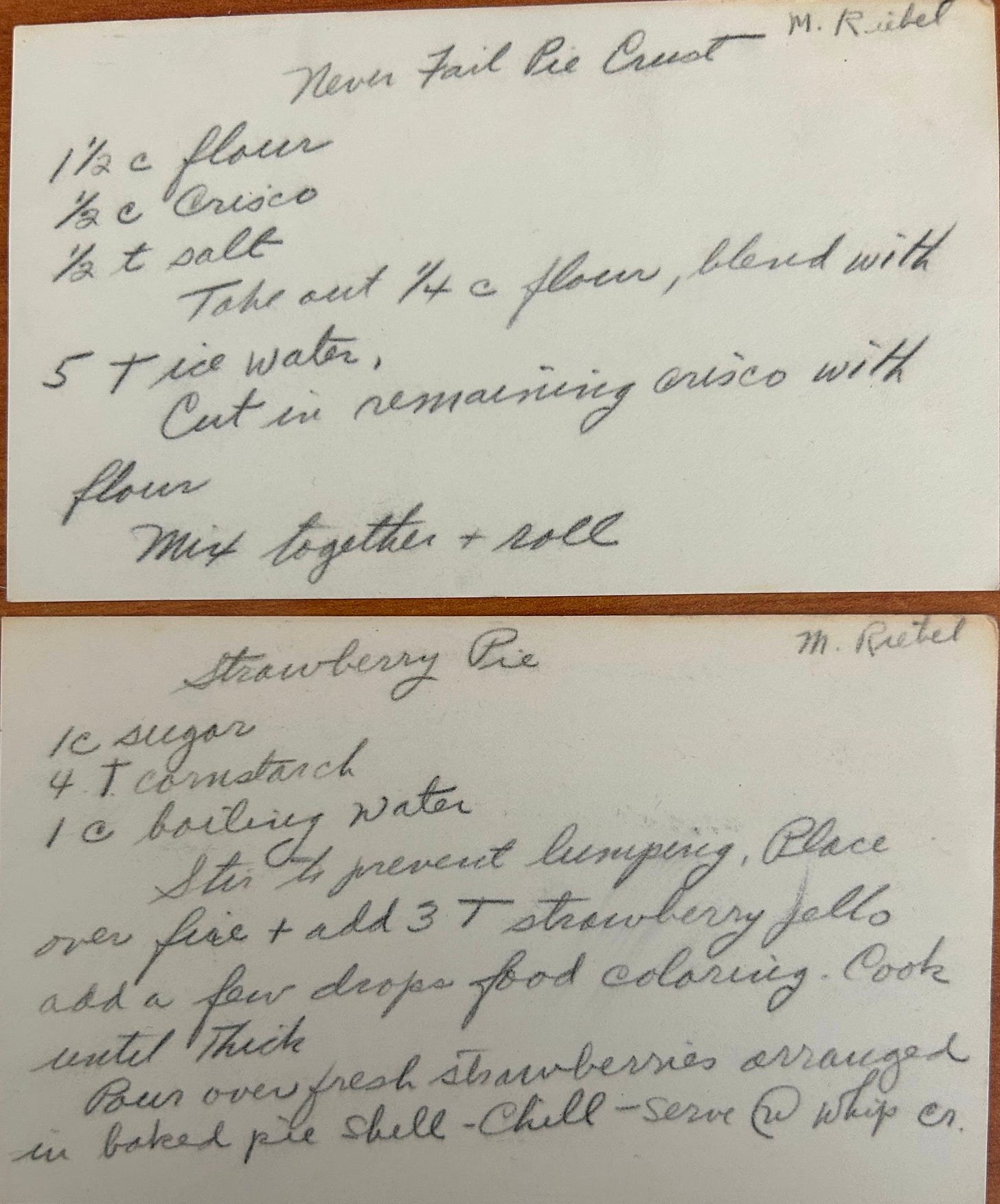
Bogie and Bacall are terrific, of course, but Claire Trevor is the secret sauce in this one. Underrated actress.